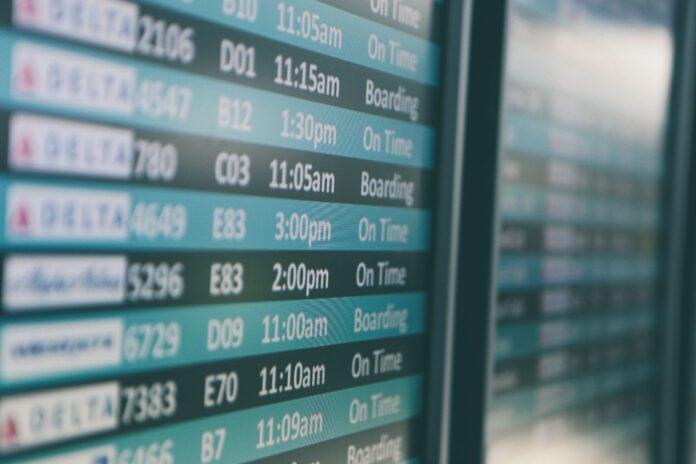By Scott Keyes for Going.com
Mistake fares—what and why
A mistake fare is when an airline accidentally sells flights at a 90% discount or more. They’re the holy grail of the cheap flight world.
They can happen for several reasons: human error (say, pricing a $1,300 flight as $130), technological mishaps (airlines use complex algorithms to price millions of fares—mistakes happen), partner miscommunication (you can buy an airline’s tickets from tons of places other than that airline, and sometimes fares get lost in translation), or other factors.
A few of my favorite mistake fares we’ve sent Going members since 2018 (all roundtrip):
- LAX to Bangkok for $633 (lie-flat business class)
- SFO to Fiji for $396
- NYC to Buenos Aires for $236
- Boston to the Azores for $652 (lie-flat business class)
Because the fares are literally a mistake, they only last as long as it takes for the airline or online travel agency to fix it. It’s rare to see a mistake fare still available longer than six hours.
How to find mistake fares
There are a few times when the likelihood of finding a mistake fare is slightly higher—nights, weekends, holidays, all times when fewer airline employees are around to catch and fix a mistake.
But by their nature, mistake fares are unpredictable. (To give you a sense, we typically find 6–10 mistake fares each year. In 2025, we’re predicting 3–7.)
Given their rarity, there’s no way to know in advance when or where the next mistake fare will pop up. You’ve just got to be lucky enough to be searching in the right place at the right time when a mistake fare rears its rare head.
So, if you’re hoping to find a mistake fare, you’ve got two options: You could personally spend all day every day searching for flights (that’s my idea of a good time, but I recognize it’s not for everyone), or you could let Going do it for you.
Will airlines honor mistake fares?
In the vast majority of cases, yes. We’ve seen dozens of mistake fares over the years, and in at least 85% of cases, airlines honored the tickets.
Since 2015, airlines haven’t been legally required to honor mistake fares, but they’ve continued to do so at high rates. Why? It’s a smart business decision.
If an airline cancels thousands of tickets, they’re going to have a social media storm on their hands and lose money in brand equity. Conversely, if they honor the mistake fare, they lose some amount of potential revenue, but they’ll also gain customer loyalty and a brand boost from travelers who got the deal of a lifetime.
In the rare instances that an airline cancels a mistake fare, they almost always do so within a few days. It stinks when a great deal falls through, of course, but you’ll get a full refund and be no worse off than before.
How do you know if an airline has honored a mistake fare? In rare cases, they’ll make a public announcement, but much more often, no news is good news. If they haven’t emailed you within two weeks of booking to cancel the tickets, you can feel confident the deal was honored.
(And in case you were wondering, airlines can’t retroactively charge more than you agreed to pay for the ticket. It’s against federal law.)
Best practices when booking a mistake fare
When a mistake fare pops up, there are a number of best practices that will help you take advantage:
- Book quickly: With airfare, the better the fare, the shorter it tends to last. Don’t expect today’s mistake fare to be around tomorrow. Once it’s gone, it’s gone.
- Book directly: Booking directly with an airline (rather than through an online travel agency) has two benefits. First, it lets you cancel for a full refund under the 24-hour rule (more on that below). Second, tickets get processed almost instantaneously, whereas flights booked through OTAs generally take longer to ticket. Time is of the essence with mistake fares, so no sense in adding delays and risking the deal disappearing.
- Remember the 24-hour rule: Under federal law, airlines are required to give customers a 24-hour grace period after they hit purchase during which they can cancel and get a full cash refund—so long as you booked directly with the airline and it’s at least seven days from travel dates. (This applies equally to foreign airlines as long as there’s a flight in the itinerary that departs or lands at a US airport.) Even if you’re not 100% sure about a trip, booking the flight essentially locks in the mistake-fare price and buys you 24 hours to decide whether to keep it or cancel for a full refund.
- Consider multiple dates: If your travel partner is tied up and you don’t want to risk the deal disappearing, the best approach is to book multiple trips—one week in March, one week in April, and one week in May, for instance—and then decide which one to keep and which to cancel for a full refund. (Thanks, 24-hour rule!)
- Wait two weeks after booking: When an airline cancels a ticket, they’ll almost always email you within a few days of the mistake. To be extra safe, I like to wait two weeks after booking to feel confident the fare was honored. If there’s no news and I can still log on to the airline’s site and see my ticket, it’s time to start planning my trip.






























